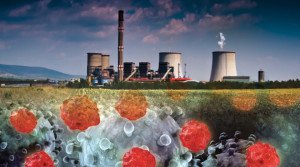Toxins from chemicals in our drinking water
2 min read
The presence of toxins in our drinking water is a primary health issue affecting many communities in the United States and around the world. Many times, such toxins pollute the lakes, rivers and reservoirs that supply our drinking water as a result of human activity, primarily from the dumping of industrial waste into our water systems.
Another method by which toxins enter our water is through pesticide contamination. Pesticides that are not absorbed by plants or broken up through other chemical processes can end up contaminating groundwater. It is these water-soluble pesticides that pose the greatest health threat to our bodies. The toxins from such pesticides can cause headaches, nausea, dizziness, GI tract disorders, nervous system disorders, convulsions, and even heart attacks. Long term effects can include cancer and death.
Toxins often found in water, include:
- Lead: Higher incidence levels of lead poisoning often arise in areas where the water is contaminated with industrial waste. Lead can cause high blood pressure, headaches and even nervous system disorders.
- Arsenic: Arsenic contamination often occurs from phosphorus-based fertilizers. It can cause a number of adverse health conditions, such as skin lesions. If not treated properly and on time, this condition can be fatal.
- Chlorinated solvents and heavy metals: Chlorinated solvents are often seen in industrial waste water. Drinking water contaminated by chlorinated solvents and heavy metals can lead to serious health problems.
- Organic pollutants: A variety of organic pollutants, such as bacteria, pollute water, making it unsafe for consumption. Drinking water contaminated by organic pollutants can lead to a number of diseases, including malaria, cholera, and typhoid.
The US government has implemented a number of measures to combat the toxic threat of chemicals in our water. In areas containing water sources with traces of pesticides, the Government has developed new strategies to provide alternative water sources and has incorporated new technologies to remove the toxins from the water. In addition, the Government is more strongly regulating the use of pesticides, ensuring that farmers and gardeners do not dump unused pesticides into water systems.






